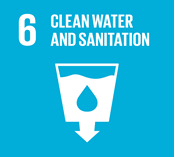
TUESDAY, JAN 17, 2023: NOTE TO FILE

Module 2-1
1. Introduction
“Water is a point of connection for many of our global challenges — as well as for solutions. Protecting water resources, such as maintaining moisture in soil, can help mitigate against climate change. The water cycle interacts with all basic biophysical cycles: the carbon cycle, the energy cycle and the nutrient cycle. The better we understand this, and the better we appreciate how water processes relate to alleviating poverty and hunger, reversing desertification, and rebuilding biodiversity, the more equipped we will be to take on the difficulties of our time.”
Judith D. Schwartz, Water in Plain Sight: Hope for a Thirsty World, 2016.
[Understanding water processes to allow humans to prosper is the exact opposite of 'rebuilding biodiversity']
THE LINK BETWEEN FOSSIL fuel reserves and war have been clear for decades, yet equally many violent conflicts and wars have already been fought over access to water. Freshwater is already a very scarce resource; it is just 3% of all the water on the ‘blue planet’. If all the Earth’s water were brought together into single drops of the oceans and freshwater, they would look like this: [The link between fossil fueled growth over the last 300 years has allowed resource acquisition and food production, unforeseen by Malthus, to grow faster the population, increasing per capita consumption, decreasing scarcity induced conflict such that, as Steven Pinker has noted, a decline in conflict/war/poverty if not inequality on the upslope. As Pinker fails to realize, the data on the downslope will tell a different story that the better angels of our nature will demure to.]

Source: USGS.gov Where is Earth’s Water?
And yet freshwater is wasted and contaminated on a gigantic scale. Many of the world’s mega-cities, such as Chennai, Sao Paolo, Cape Town and Melbourne have already faced a significant water crisis and it is evident that the systems we have designed to provide freshwater and care for its sources are deeply inadequate. [I shit in my drinking water, as others do. Millions of household in Mexico City alone depend on trucks to haul water to fill tanks on their roof.]
• 1 in 10 people lack access to safe water, 1 in 3 do not have access to a toilet [20% of Russians have no toilets].
• women and children spend 125 million hours each day collecting water.
• 785 million people lack even a basic drinking-water service, including 144 million people who are dependent on surface water
• at least 2 billion people use a drinking water source contaminated with feces
• 485,000 diarrhea deaths occur each year from contaminated drinking water
• by 2025, half the world’s population will be living in water-stressed areas
• by 2030, 700 million people worldwide could be displaced by intense water scarcity
• a third of the world’s biggest groundwater systems are already in distress.
• every 90 seconds a child dies due to contaminated drinking water
(water.org, Global Water Institute, 2013, Richey et al., 2015, Burek et al., 2016, WHO, 2015)

The Sustainable Development Goal number 6: Ensure availability and sustainable management of water and sanitation for all.
The grim statistics above affect the health and resilience of people and communities.
Yet, experts estimate that for every dollar invested in clean water and sanitation, a return of US$4 is generated (water.org). In developing countries, the time children and women spend fetching water could respectively be dedicated to education and engaging in other economic activities. The knock-on effects [a secondary, indirect, or cumulative effect] of the lack of clean water and sanitation are major drivers of poverty, hunger, ill-health, and environmental degradation. What many people in the global north take for granted - a tap with drinking-quality water - is out of reach for 800 million people. We cannot create a sustainable world without also creating a more equitable world in which essential resources are available to all global citizens. How can we ensure that the ambitions that created SDG 6 are fully achieved?

To start, 97% of people in Arizona move.
How do we use freshwater? As we can see, agriculture takes the highest percentage and most of this is for irrigation of annual crops. Industry takes up nearly a quarter of the freshwater use. Is there any point in trying to take shorter showers and turn off the tap when brushing our teeth?
Here is a short video (4min) outlining ways we can change our attitude to the freshwater crisis.
Module 2, lesson 2
